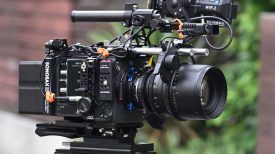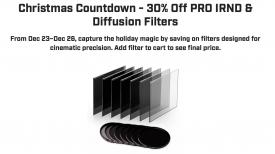Guest post by Norman Lomax:
‘Creating the Spectacle!’ Sue Austin flies her underwater wheelchair from Moving Content on Vimeo.
Sue Austin is a performance artist whose ambition is to transform perceptions around wheelchair users. After many years of being bedbound, the wheelchair gives her freedom. For many, a wheelchair signifies the end of something; for her, it’s just a start.
I first came across Sue in my local swimming pool, where she was trying out her modified wheelchair. Despite spending many years running around the world covering different stories nothing quite prepared me for the sheer impact of seeing Sue ‘flying’ underwater in her NHS wheelchair. I guess that says a lot about my subconscious perception of disability and what a wheelchair represents. Within seconds, I’d got it: it was quite a visual shock – wheelchairs trundle along the ground. They don’t fly free, let alone underwater.
But Sue has adapted her wheelchair with battery powered propellers first developed for the US Navy divers and large perspex aerofoils to control turns. She is in the process of applying for a patent and hopes that one day these chairs will be made available at diving centres across the world.
She invited me to join her ‘Freewheeling‘ team. I was in. My role was to collaborate with Sue and help express her vision. As a story teller, I have always been interested in ordinary people whose passion and determination leads them to achieve extraordinary things – I guess it’s life affirming. Sue’s passion is to change what she sees as negative perceptions around wheelchairs for both users and non users. I think her project goes further than that; it inspires us all to face whatever personal challenge we may have.
Also, I’d been a keen diver for several years and had always wanted to do something special underwater. This was my opportunity. Shooting underwater? No problem: whack a Canon 5D mkII in a housing and off we’d go. How little did I know.
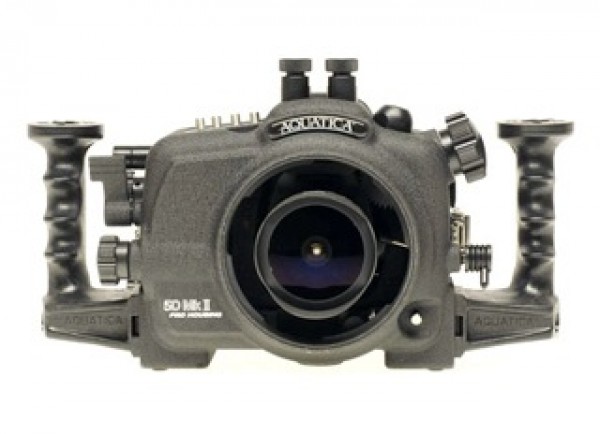
The first issue was selecting the housing. With help from Cameras Underwater I soon learnt it’s not just the housing; you have to select an appropriate ‘extension ring’ to match the lens used. Then there’s the port, which is like a giant front element which the lens looks through. Wide angle lenses are critical when shooting large objects underwater; the closer you can get to your subject, the less water and floating ‘debris’ to degrade your image. I’m kinda wedded to my beloved Leica R lenses and was disappointed that no one makes extensions to fit. So I went for a Canon 16-35mm f2.8L lens, which seems to be a standard for many underwater shooters. The quality of the Aquatica housing and their support made them an easy choice. It was while testing in the pool that I realized the physics of digital imaging changes underwater. At first focusing was an issue as the focus point is a virtual image created roughly a metre in front of the 8in dome port lens – I resorted to prefocusing on my fins and was able to shoot at approx f5.6 at 160 asa at 16mm.
Colour management was also a learning curve as water acts as a selective filter; red is the first colour to disappear, followed by orange, yellow and green depending on your depth. This was managed by employing the appropriately named ‘magic filter’ from Magic Filters http://www.magic-filters.com/about.html but still required custom white balancing for every couple of metres of depth.
The housing was a revelation. Combined with my diving buoyancy skills it was like having a Steadicam underwater. Everything was so balanced that if I let go of the camera it would almost hang motionless in the water.
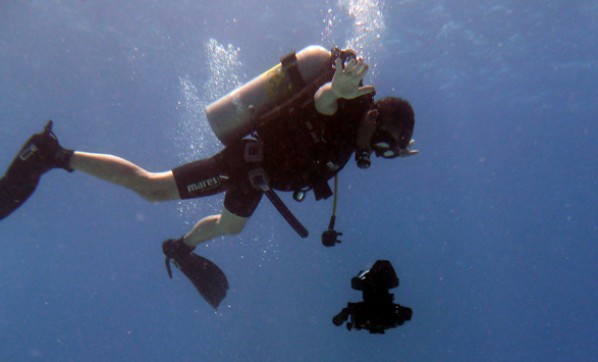
The Shoot
We filmed the project in the Red Sea around Sharm el Sheik, Egypt. Diving has been described as like going for a spacewalk, as you float in a semi-weightless environment with your own life support system on your back. Keeping a camera steady on an inanimate object is a major challenge, let alone trying to follow an acrobatic wheelchair which is also floating around in three planes. To make things even more unpredictable, Sue could hardly see due to her aesthetic of not wearing a diving mask. Managing the shoot was, let’s say, interesting… Especially as we were trying to get 5D footage, panoramic Go-Pro footage and stills in each 25-minute diving window. Luckily we had expert help from the immensely experienced instructors at the Camel Dive Club and a team of helpers to act as safety divers and to carry the equipment to make our ‘bubble curtains’ for Sue to swim through.
Even so, constant fear of the housing flooding made for a very nervous novice. When shooting a night dive, the housing’s onboard moisture alarm starting flashing and beeping. Only at 15m I risked a fast ascent to the surface and swam back to the boat with the camera balanced on top of my head fearing the worst. When I opened the housing everything was dry! – an amazing testament to the sensitivity of the alarm. Don’t leave home without one.
360 panoramic film
Part of Sue’s commission was to supply a 360 degree film to be shown at Plymouth University’s ICCI 360 Dome as part of the Paralympic celebrations. They had a rig engineered which would allow 6 GoPros to be mounted giving a 360 degree view.
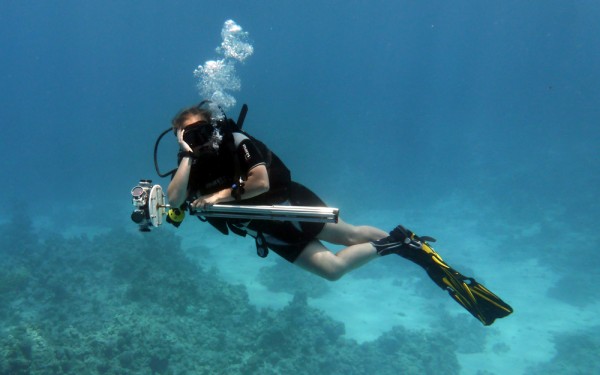
This was then suspended from a lighting stand to ensure the operator was out of shot.
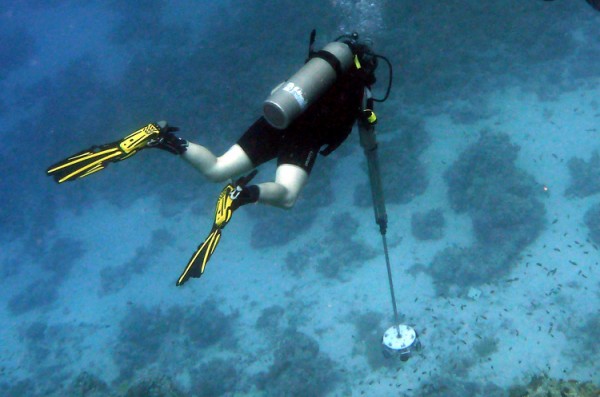
The footage from each camera was then edited by Sue and matched up in a 9600×1080 frame with a 10% overlap. This was then ‘edge blended’ using propriety software from Igloo Vision and then projected in a 360 degree Dome. The audience sat in the centre surrounded by the action.
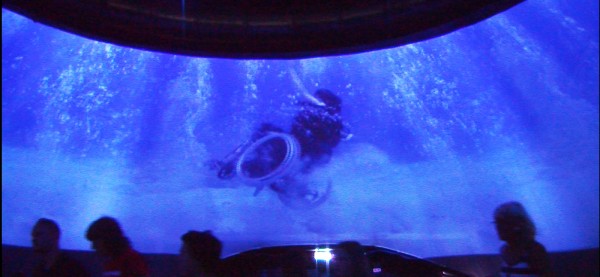
As a result of our initial shoot in the Red Sea , the organizing committee of the London 2012 Olympic and Paralympic Games commissioned a film of Sue underwater with the Paralympic torch. This was shown at the 2012 Flame festivals as part of the Opening Celebrations of the Paralympics. For licensing reasons we can’t embed the film here but you can see it here.
Norman Lomax is a former UK Sports Photographer of the Year. Norman spent many years freelancing for Europe’s premier magazines along with stints as a staffer at The Independent and The Observer Newspapers. Always a frustrated film-maker, he has become recently re-energised by the technical revolution in digital video which he believes allows traditional photography skills to be applied to moving image. He is based on the South Coast of England and has set up his own production company, Moving Content.




